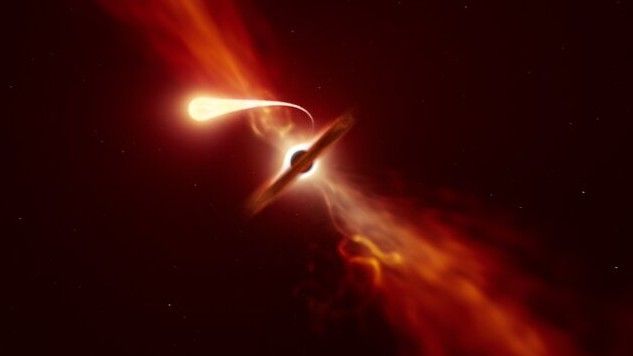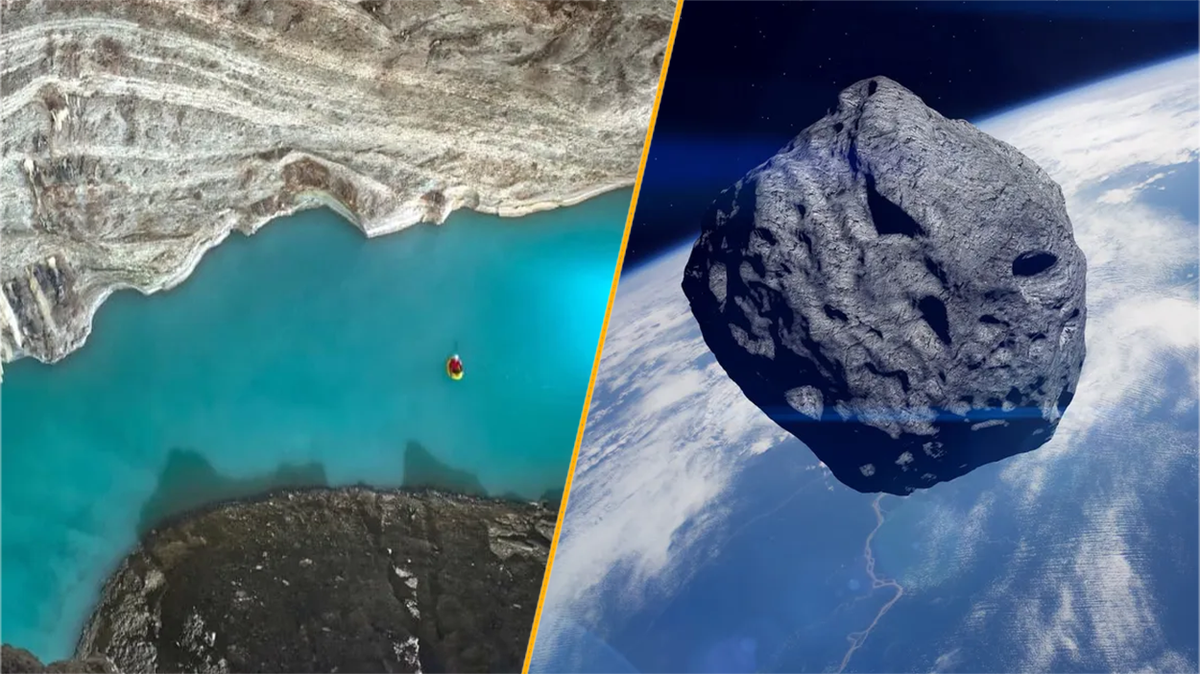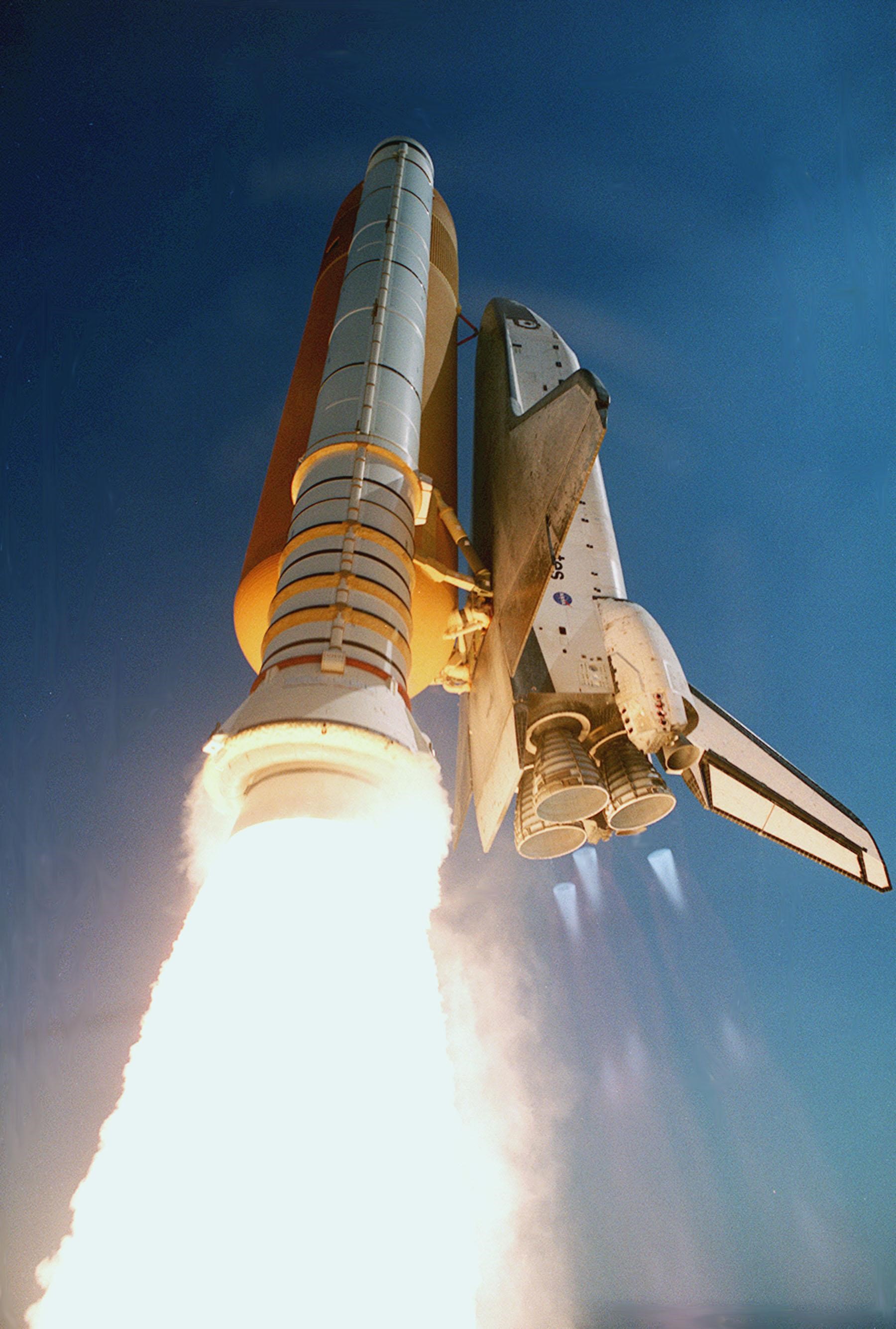Add office photos
Employer?
Claim Account for FREE
Environmental Science Associates
-
No reviews yet
About Environmental Science Associates
Founded in1915 (110 yrs old)
India Employee Count--
Global Employee Count5k-10k
HeadquartersWashington
Office Locations
--
Websiteesassoc.com
Primary Industry
--
Other Industries
Are you managing Environmental Science Associates's employer brand? To edit company information,
claim this page for free
Managing your company's employer brand?
Claim this Company Page for FREE
Compare Environmental Science Associates with Similar Companies
Change Company | Change Company | Change Company | ||
|---|---|---|---|---|
Overall Rating | - based on 0 reviews | 3.7/5 based on 317 reviews | 3.8/5 based on 149 reviews | 4.5/5 based on 324 reviews |
Highly Rated for | - | Work-life balance Job security | Job security Skill development | Company culture Skill development Work-life balance |
Critically Rated for | - | Promotions Skill development Work satisfaction | Salary Promotions | No critically rated category |
Primary Work Policy | - | Hybrid 87% employees reported | Work from office 89% employees reported | Work from office 89% employees reported |
Rating by Women Employees | - no rating available | 3.5 Good rated by 65 women | 4.1 Good rated by 13 women | 4.5 Good rated by 83 women |
Rating by Men Employees | - no rating available | 3.7 Good rated by 221 men | 3.8 Good rated by 128 men | 4.6 Excellent rated by 215 men |
Job security | - Data not available | 4.0 Good | 4.4 Good | 4.2 Good |
View more
Environmental Science Associates Salaries
Project Engineer
(4 salaries)
Unlock
₹3.5 L/yr - ₹5.2 L/yr
Senior Engineer
(3 salaries)
Unlock
₹4.2 L/yr - ₹5.6 L/yr
Content Writer
(1 salaries)
Unlock
₹3.8 L/yr - ₹4.8 L/yr
Personal Security Officer
(1 salaries)
Unlock
₹2.2 L/yr - ₹2.8 L/yr
Lead Consultant
(1 salaries)
Unlock
₹17.1 L/yr - ₹21.9 L/yr
ST
(1 salaries)
Unlock
₹9.2 L/yr - ₹11.7 L/yr
Executive Trainee
(1 salaries)
Unlock
₹3.8 L/yr - ₹4.9 L/yr
System Engineer
(1 salaries)
Unlock
₹9 L/yr - ₹11.5 L/yr
SDE (Software Development Engineer)
(1 salaries)
Unlock
₹10.8 L/yr - ₹13.8 L/yr
English Trainer
(1 salaries)
Unlock
₹5.4 L/yr - ₹6.9 L/yr
Environmental Science Associates News
View all
The Earth is at risk of a city-killer asteroid strike in 2032
- Astronomers discovered the asteroid 2024 YR4 in December 2024, with a potential collision date of December 22, 2032.
- Initially, the chance of impact was 1%, now at 3.1%, the highest ever recorded for a dangerous asteroid.
- The potential consequences of the 'city-killer' asteroid include wiping out an entire city with energy equal to 8 megatons of TNT.
- Efforts to monitor the asteroid's orbit have raised the impact probability, with NASA at 3.1% and ESA at 2.8%.
- YR4 falls into the 'city killer' category, with the potential to devastate cities like Mumbai, Bogota, or Lagos.
- NASA and ESA are using advanced telescopes to monitor 2024 YR4 and assess its size and trajectory.
- Experts believe the collision odds will drop below 1% by April 2025, and agencies are prepared with deflection measures if needed.
- Although the risk is low, continuous monitoring of 2024 YR4 is crucial due to potential significant consequences.
- Recent notable asteroid impacts include the Siberia Fireball, Philippines Fireball, and Berlin Meteor in 2024.
- Continuous monitoring and early detection of near-Earth objects are essential to assess threats and understand asteroid impacts.
Brighter Side of News | 20 Feb, 2025

See the stunning cosmic clouds captured in new Hubble image
- A new image from the Hubble Space Telescope captures stunning cosmic clouds near the Tarantula Nebula in the Large Magellanic Cloud.
- Dust, once considered an annoyance, is now recognized for its importance in star and planet formation.
- The presence of dust in the region spurs star formation as it attracts particles and facilitates the formation of cores.
- Although dust can block visible light, telescopes like the James Webb Space Telescope use infrared radiation to see through it and reveal hidden structures.
Digitaltrends | 19 Feb, 2025

Station Science Top News: Feb. 14, 2025
- Researchers report detailed physical properties of different types of corona discharges, including single- and multi-pulse blue discharges linked to powerful but short-lived electrical bursts near the tops of clouds.
- An ESA instrument, Atmosphere-Space Interactions Monitor (ASIM), used to study thunderstorms provides insights into their role in Earth's atmosphere and climate, including the mechanisms behind the creation of lightning.
- Researchers conclude that the space station's ECOSTRESS instrument yields highly accurate sea surface temperature data, which has potential use in studies of biological and physical oceanography to evaluate regional and local effects of climate change.
- Researchers report detailed observations and analysis of emissions from an exceptionally bright gamma ray burst (GRB) detected by the station's ASIM and other satellite and ground-based instruments, which could be useful in determining various properties of GRBs and how they change during different phases.
Nasa | 18 Feb, 2025

Our galaxy's monster black hole is spitting out mysterious flares, James Webb telescope reveals
- Astronomers using the James Webb Space Telescope observed our galaxy's supermassive black hole, Sagittarius A*, and found constant flares erupting from the gas swirling around it.
- Sagittarius A* is 26,000 light-years away, 4 million times the mass of the sun, and 14.6 million miles wide.
- The black hole's unique and active nature was observed over 2023-2024, with constant changes in activity noted during multiple observations.
- Despite being a small fraction of the Milky Way's mass, Sagittarius A* influences the galaxy's evolution by sucking in and ejecting matter.
- JWST's observations revealed 5-6 big flares per day from the black hole, showing random and unpredictable activity.
- The flares may result from compression in the accretion disk and clashes of magnetic-field lines within the disk.
- Flares were observed dimming faster at shorter wavelengths, indicating energy loss by particles in the flares swirling around magnetic-field lines.
- Future research aims to observe the black hole for longer periods to reduce noise and explore other features in its surroundings.
- Understanding these flares and their sources can provide insights into the dynamics of supermassive black holes and their impact on galaxies.
- Observing Sagittarius A* with JWST presents an opportunity to unlock more mysteries surrounding the behavior and nature of these cosmic monsters.
Livescience | 18 Feb, 2025

Science news this week: Hidden lakes and a 'city-killer' asteroid
- Asteroid 2024 YR4 poses a small but increased risk of colliding with Earth in 2032, with potential to cause significant damage.
- The asteroid, about 180 feet across, has been assigned emergency observation by an international team using the James Webb Space Telescope.
- Scientists discovered the world's largest known underground thermal lake in Albania, measuring 454 feet long and 138 feet wide.
- The lake in Albania's cave, named Lake Neuron, could provide valuable insights into underground ecosystems and geology.
- 'Mysterious tunnels sketched by Leonardo da Vinci in 1495 may have been discovered under (Sforza) castle in Milan.'
- Researchers found that a compound in foxglove plants, digoxin, used for heart conditions, may help break apart cancer cells.
- A most energetic neutrino was detected at the Mediterranean Sea floor, and a hybrid quantum supercomputer went online in Japan.
- Flies are attracted to humans due to factors like warm blood and skin oils, and AI art is explored for its limitations in mimicking human intelligence.
- Dumping corpses in the Thames since the Bronze Age and observing rare zodiacal light are among intriguing science topics of the week.
- An image capturing the 'cosmic web' connecting galaxies near the dawn of time offers new insights into the structure and evolution of the universe.
Livescience | 15 Feb, 2025

Tiny Solar Jets Drive the Sun’s Fast and Slow Solar Wind
- The Sun emits a constant stream of charged particles called the solar wind, traveling at speeds of 400-800 km/s and extending to 125 astronomical units.
- Recent observations by the ESA Solar Orbiter spacecraft revealed tiny plasma jets contributing to the solar wind.
- These jets, observed within coronal holes close to the Sun's equator, play a crucial role in shaping the fast and slow components of the solar wind.
- High-resolution imaging helped detect these tiny jets, leading to a better understanding of the solar wind generation process.
- The solar wind, with effects seen in variable space weather, includes outbursts like X-class flares and coronal mass ejections.
- Variations in solar activity influence the solar wind, impacting Earth's auroras and space communication technologies.
- The solar wind comprises slow and dense wind around the equator and fast, less dense wind at higher latitudes, originating from coronal holes.
- Nanoflare outbursts known as picoflare jets are powered by magnetic reconnection, releasing heat and energy into the corona.
- Magnetic reconnection also plays a role in comet plasma tails, demonstrating a similar process on a smaller scale compared to the Sun.
- Continuous nanoflares powered by magnetic reconnection contribute collectively to the solar wind, with spacecraft like the Solar Orbiter monitoring this phenomenon.
Universe Today | 13 Feb, 2025

The Euclid Space Telescope Captures a Rare, Stunning Einstein Ring
- The Euclid Space Telescope captured a stunning Einstein Ring, a rare celestial phenomenon where three parts align perfectly.
- Gravitational lensing creates Einstein Rings, such as the one observed with the galaxy NGC 6505 as the foreground object.
- The background galaxy, located 4.42 billion light-years away, contributed to the formation of the Einstein Ring.
- Euclid, launched in July 2023, is vital for measuring redshift of galaxies, aiding in understanding dark energy and dark matter.
- Scientists were surprised by the discovery of the Einstein Ring, showcasing Euclid's capabilities in unveiling new astronomical phenomena.
- Euclid's findings led to the publication of research on the NGC 6505 Einstein Ring, providing valuable insights into cosmological studies.
- Strong gravitational lenses like the observed Einstein Ring offer a unique view of background galaxies and aid in studying the Universe's expansion.
- The low redshift of the lens galaxy in this rare observation allows for detailed analysis of galaxy composition and structure.
- Euclid's mission is set to last six years, during which more rare cosmic phenomena might be uncovered, but findings like this Einstein Ring are exceptional.
- Studying Einstein Rings like the one in NGC 6505 provides significant insights into gravitational lensing, early-type galaxies, and cosmic expansion.
Universe Today | 13 Feb, 2025

Euclid space telescope discovers Einstein Ring in a nearby galaxy
- Scientists using the Euclid space telescope have discovered an Einstein ring in the galaxy NGC 6505, shedding light on gravitational lensing and dark matter mysteries.
- The Einstein ring, resulting from gravitational lensing, is a perfect ring of distorted light around the galaxy's center, showcasing the alignment of celestial objects.
- Gravitational lensing, as predicted by Albert Einstein's theory of relativity, allows astronomers to see distant galaxies through the bending of light paths.
- Euclid's high-resolution imaging capabilities helped unveil this rare and visually stunning Einstein ring, highlighting the hidden wonders in familiar cosmic regions.
- By studying strong gravitational lenses like the Einstein ring, scientists can gain insights into dark matter distribution, cosmic distances, and the universe's expansion rate.
- Euclid's mission, launched in 2023, aims to map dark energy and dark matter by imaging billions of galaxies up to 10 billion light-years away.
- The discovery of the Einstein ring during Euclid's early testing phase emphasizes the telescope's potential to uncover new cosmic phenomena.
- Gravitational lensing helps probe dark matter by analyzing the gravitational influence on light, offering clues to its distribution and role in the universe's evolution.
- Euclid's continuous survey is expected to reveal thousands more gravitational lenses, revolutionizing our understanding of cosmic forces and structures.
- While the Einstein ring discovery is significant, Euclid's primary focus is on detecting weak gravitational lensing effects to create detailed 3D maps of the universe.
Brighter Side of News | 13 Feb, 2025

Space Shuttle Endeavour Takes Flight
- Space shuttle Endeavour successfully launched 25 years ago on Feb. 11, 2000.
- The STS-99 mission crew included astronauts from NASA, NASDA, and ESA.
- The mission involved the deployment of the Shuttle Radar Topography Mission mast and the EarthKAM student experiment.
- EarthKAM allowed middle school students to select photo targets and receive images via the Internet.
Nasa | 12 Feb, 2025

James Webb to join observations of asteroid that could strike Earth in 2032
- The probability of asteroid 2024 YR4 striking Earth in 2032 has now risen to 2.3%.
- The James Webb Space Telescope will be used to track the asteroid and improve size estimates.
- Observations by ground-based telescopes will continue until April 2022 before becoming too faint to observe until 2028.
- It is possible that the impact probability of the asteroid will continue to rise or be ruled out as an impact hazard as more observations are made.
Digitaltrends | 12 Feb, 2025

Powered by
Compare Environmental Science Associates with
Boeing
3.9
Northrop Grumman
4.1
Raytheon
3.8
Thales
3.6
General Dynamics
4.1
L3Harris
3.3
WNS
3.4
Capita
3.6
Gallagher
3.8
Mercer
3.7
Goldman Sachs
3.5
Kantar
3.5
Willis Towers Watson
3.8
Nlb Services
4.0
Bill Gosling Outsourcing India
3.5
Assystem
3.8
Guidehouse
3.8
McKinsey & Company
3.8
Fidelity International
3.9
Smollan Group
4.2
Edit your company information by claiming this page
Contribute & help others!
You can choose to be anonymous
Companies Similar to Environmental Science Associates
Indian Space Research Organisation
Defence & Aerospace, Analytics & KPO
4.5
• 324 reviews
AIRBUS
Airlines / Aviation / Aerospace, Defence & Aerospace
3.7
• 317 reviews
Tata Lockheed Martin Aerostructures
Defence & Aerospace
3.8
• 149 reviews
Boeing
Airlines / Aviation / Aerospace, Manufacturing, Aviation
3.9
• 557 reviews
Northrop Grumman
Airlines / Aviation / Aerospace, Defence & Aerospace, Internet
4.1
• 13 reviews
Raytheon
Airlines / Aviation / Aerospace, Defence & Aerospace, Industrial Machinery, Aviation
3.8
• 58 reviews
Thales
Airlines / Aviation / Aerospace, Internet, Law Enforcement & Security, IT Services & Consulting
3.6
• 365 reviews
General Dynamics
Airlines / Aviation / Aerospace, Defence & Aerospace
4.1
• 6 reviews
Environmental Science Associates FAQs
When was Environmental Science Associates founded?
Environmental Science Associates was founded in 1915. The company has been operating for 110 years.
Where is the Environmental Science Associates headquarters located?
Environmental Science Associates is headquartered in Washington.
Stay ahead in your career. Get AmbitionBox app

Helping over 1 Crore job seekers every month in choosing their right fit company
70 Lakh+
Reviews
5 Lakh+
Interviews
4 Crore+
Salaries
1 Cr+
Users/Month
Contribute to help millions
Get AmbitionBox app